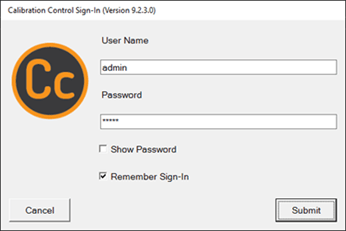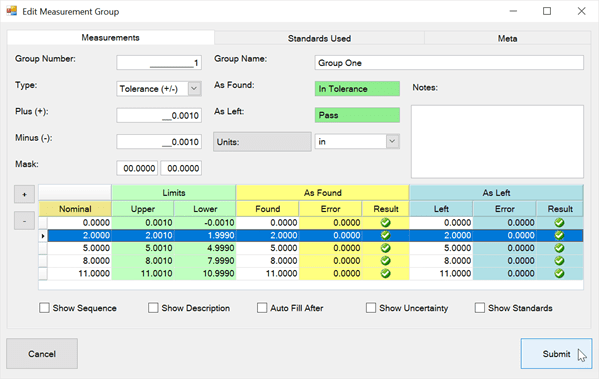Reference Bar Calibration
Purpose
The purpose of this procedure is to provide general instructions for the calibration of reference bars.
Scope
This general procedure shall be used in the absence of any specific calibration procedure for reference bars.
Procedure
A reference bar is a stack of precision gage blocks permanently wrung and fastened together. There are two sizes of gage blocks alternately used over the length of the bar. The two sizes are 0.3 inch and 0.7 inch with the 0.3-inch protruding beyond the 0.7-inch blocks.
Preliminary Instructions and Notes
- Read this entire procedure before beginning the calibration.
- Calibration shall be performed in an environment that conforms to Manufacturer Specifications.
- The reference bar will hereafter be referred to as the Instrument Under Test (IUT).
- Verify that the IUT is clean.
- Visually examine the IUT, including the base, for any condition that could cause errors in the calibration.
- Apply gage block corrections where applicable.
- If any of the requirements cannot be met, refer to the applicable manufacturer manual.
- If a malfunction occurs or a defect is observed while calibration is in progress, the calibration shall be discontinued and necessary corrective action taken; if corrective action affects a measurement function previously calibrated, the function shall be recalibrated before the remainder of the procedure implemented.
Reference Material
Applicable Manufacturers Manual or Brochures.
Specifications
The specifications of the IUT are determined by the applicable manufacturer's documentation. If the manufacturer's documentation is not available, then the specifications identified in this procedure are used.
The following are "nominal diameters" and tolerances for all reference bars.
- Accuracy: +/- 0.000010 per inch of length.
- Gage surface to base parallelism: 0.000015
Equipment Required
The Standards listed below should be selected on the basis of their higher accuracy level when compared to the IUT. Equivalent Standards must be equal to or better than the Minimum-Use-Specification.
Minimum-Use-Specifications for Standards listed are 1/4 the accuracy required by the IUT.
Required Equipment
| Standard | Accuracy |
|---|---|
| Surface Plate | Grade 2 |
| Electronic Height Gage Comparator | +/- 0.000002 inch |
| Gage Blocks | + 0.000006 -0.000005 inch |
Detailed Procedure
- Check parallelism of the IUT at the one-inch step and three random steps over the full range.
- Check accuracy of the IUT at five random steps over the full range.
- Place IUT on surface plate in the vertical position.
- Position the standard comparator so the gage head contact is on the first step of the IUT. Move the contact to the side of the block and zero the indicator.
- Move the electronic comparator contact the width of the IUT block and note the deviation from zero.
- Repeat steps 4 and 5 for the remaining parallelism checks over the range of the IUT.
- Select five gage blocks to check the accuracy of the IUT over the full range.
- Place the smallest block adjacent to the IUT.
- With the contact point of the gage head on the gage block, adjust the indicator pointer of the standard to zero.
- Slide the standard to the IUT. When the contact point of the gage head is in the middle of the measuring surface observe the reading on the standard.
- Recheck the standard reading on both the gage block and the IUT for repeatability.
- Repeat steps 8 through 11 for the four remaining gage block selections.
Reason for Reissue
Revision A - First Release





